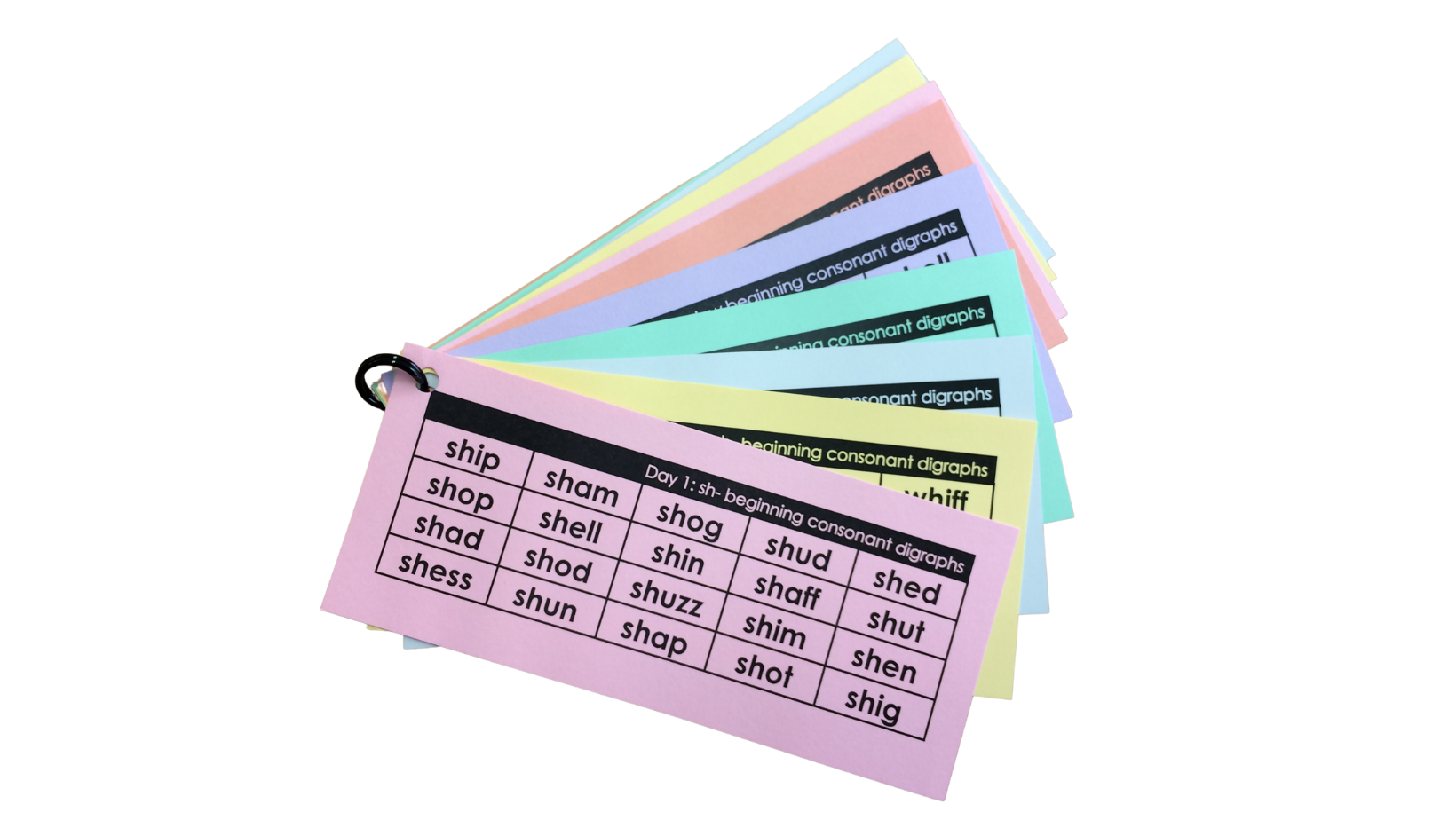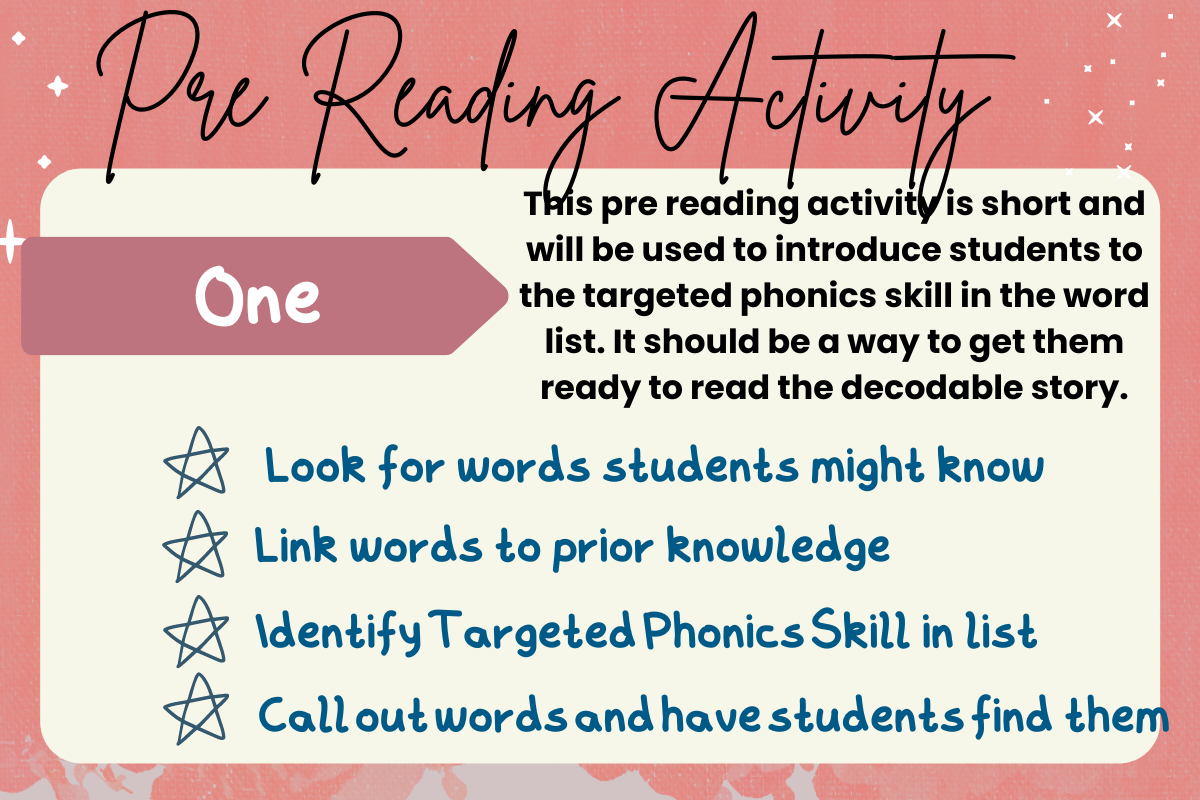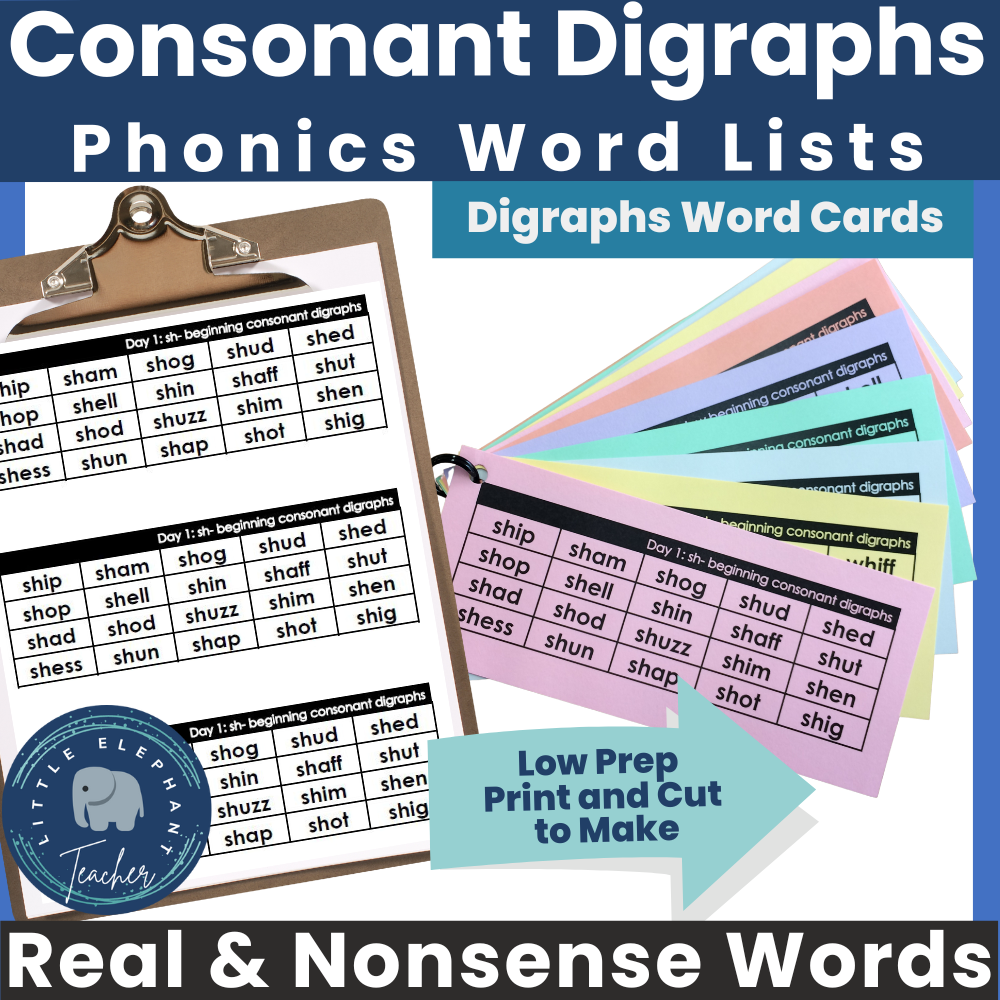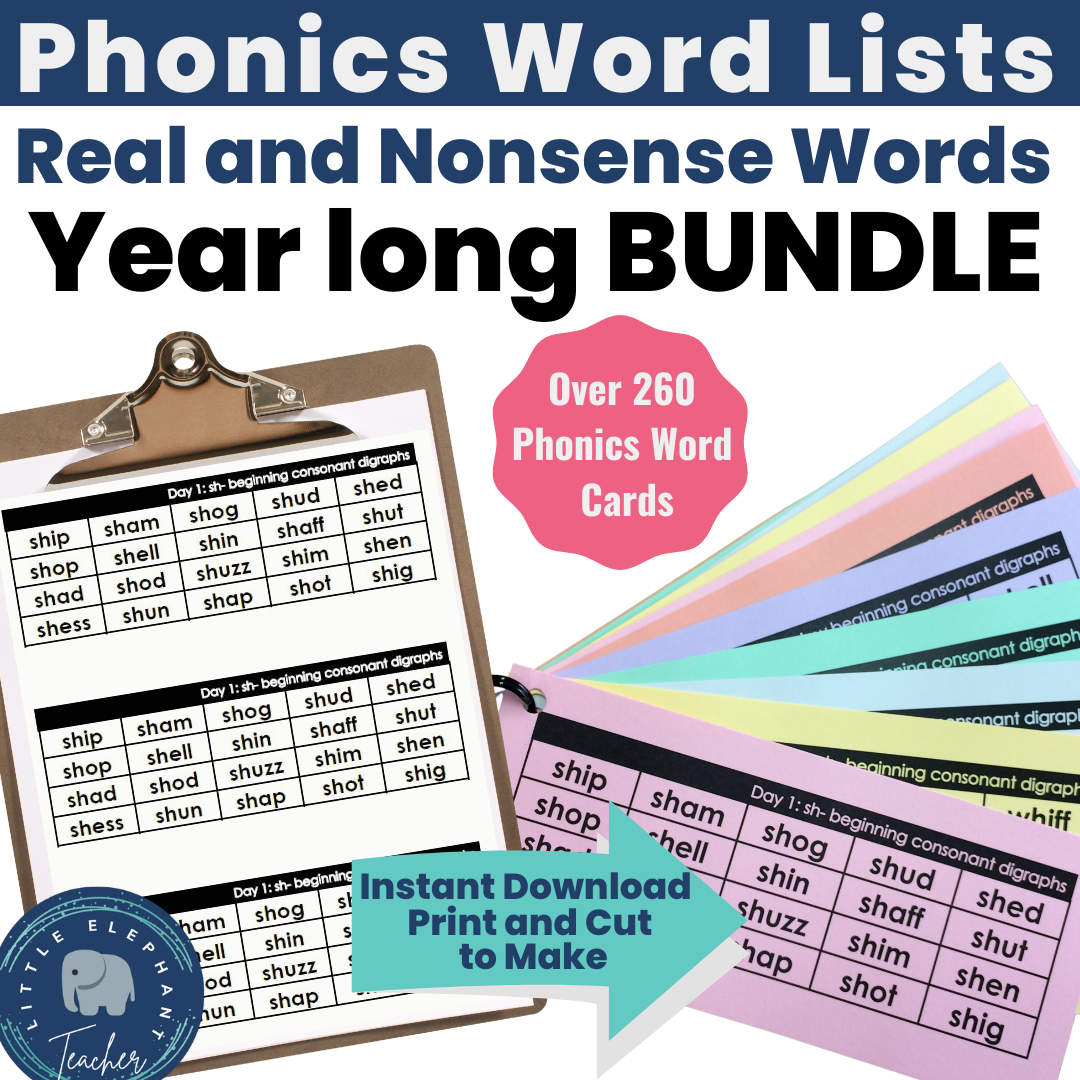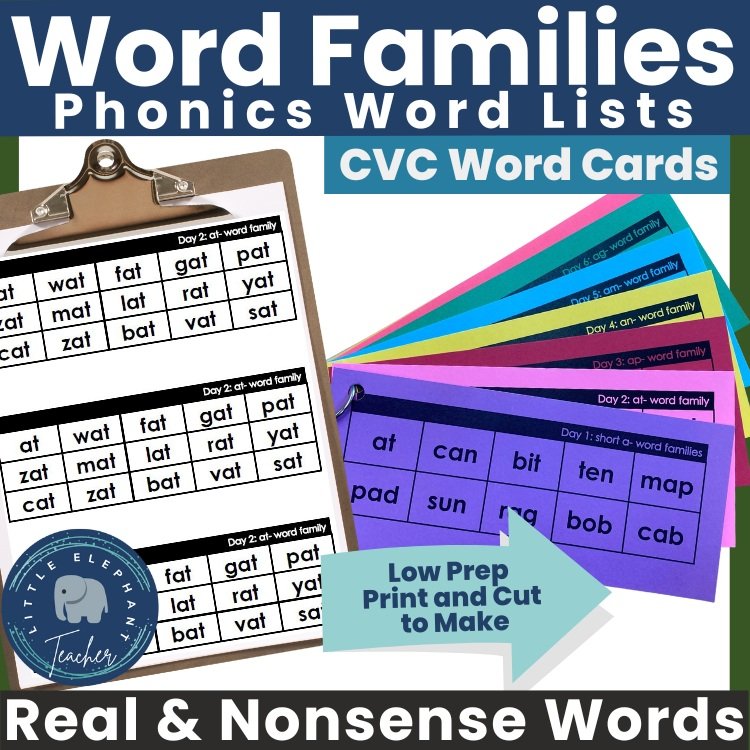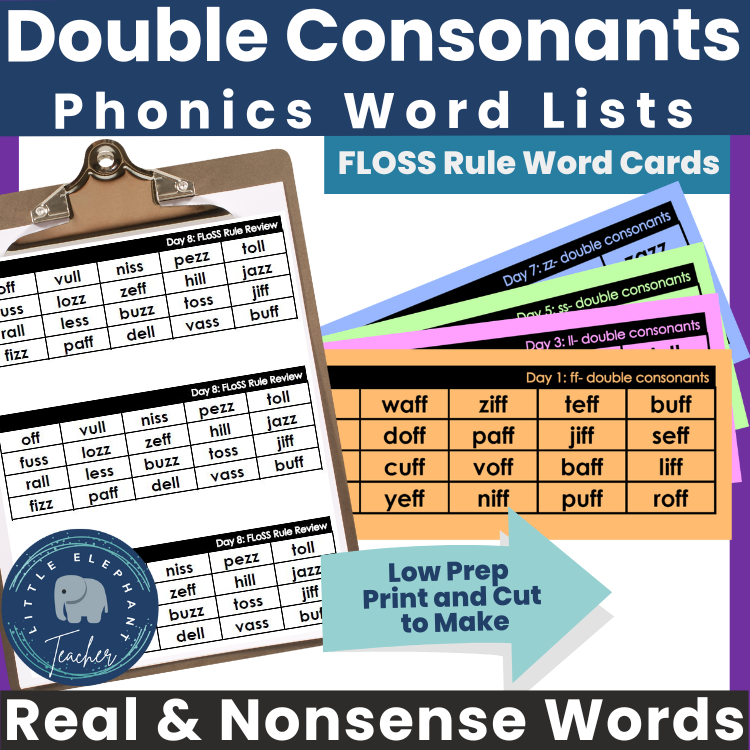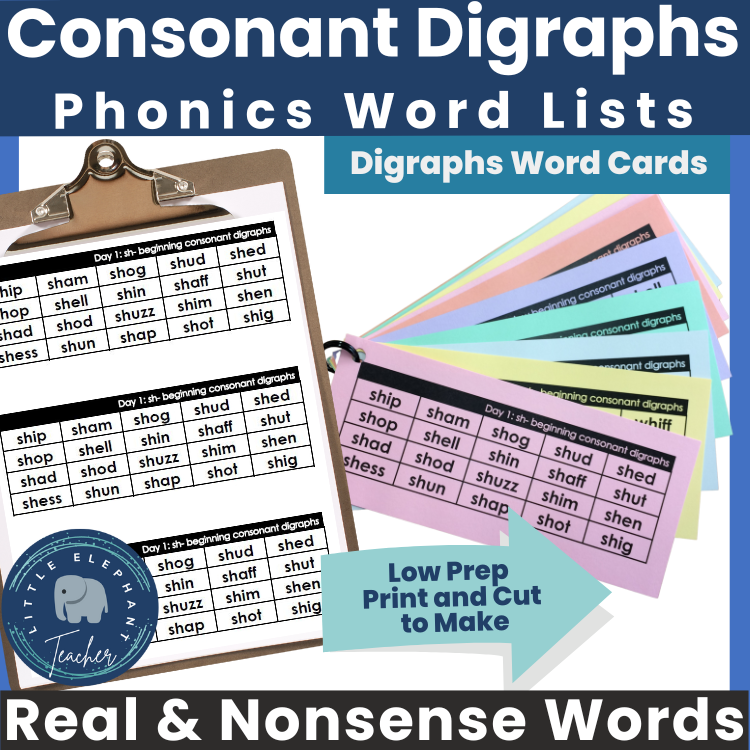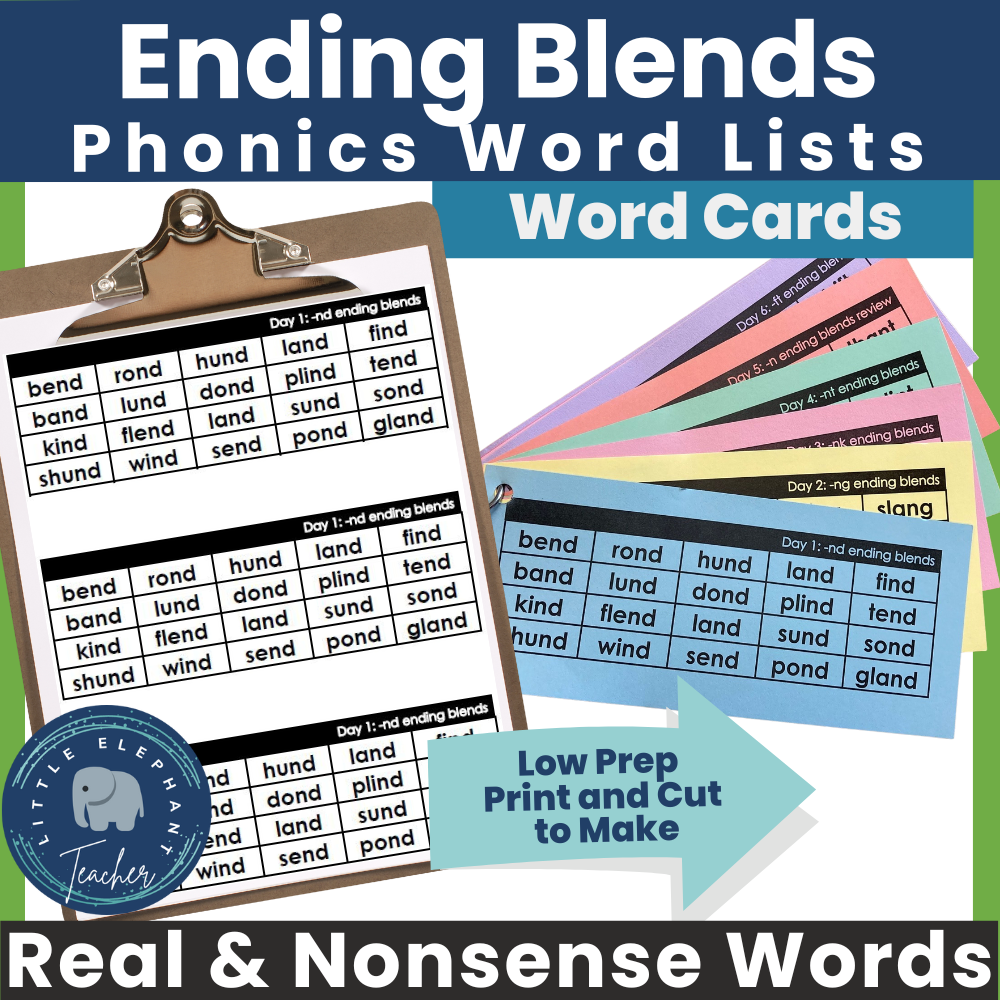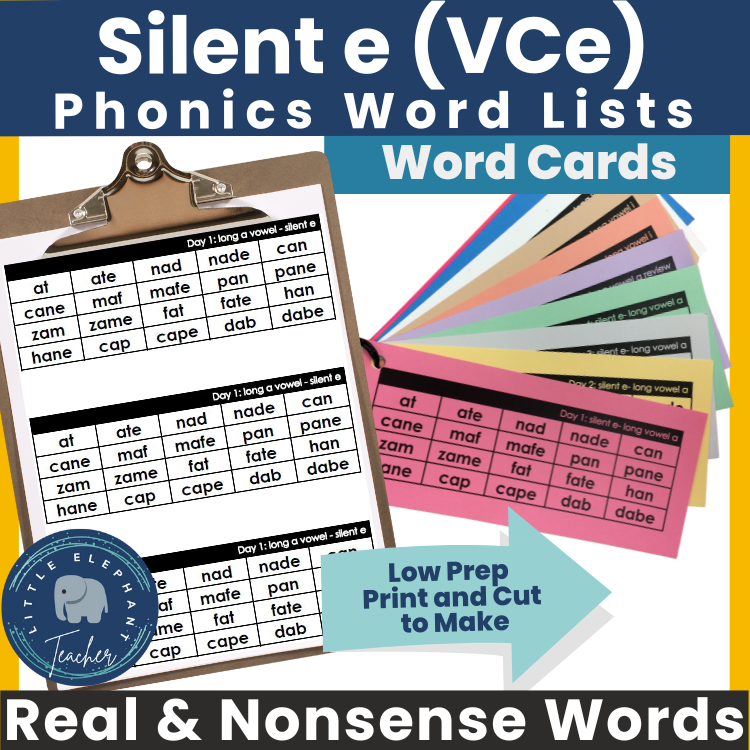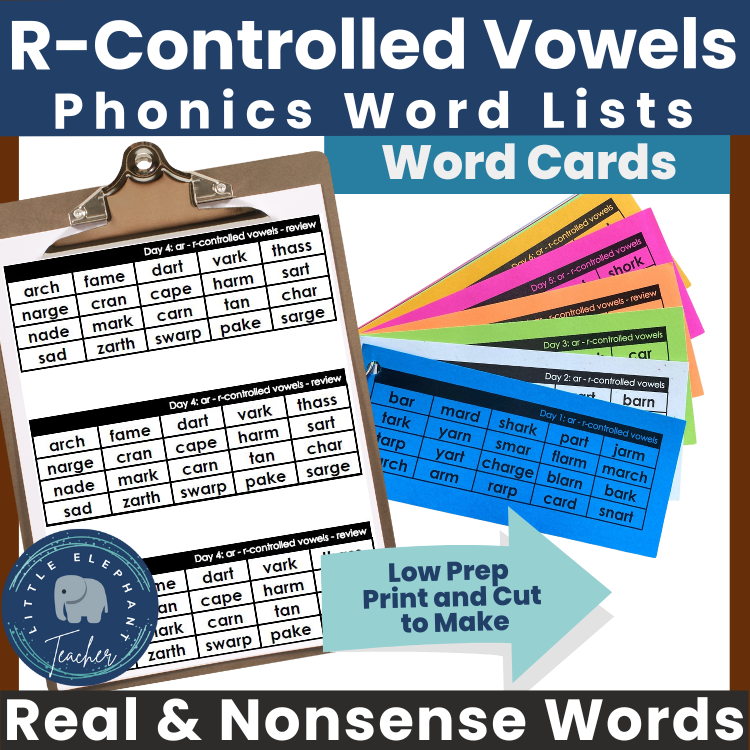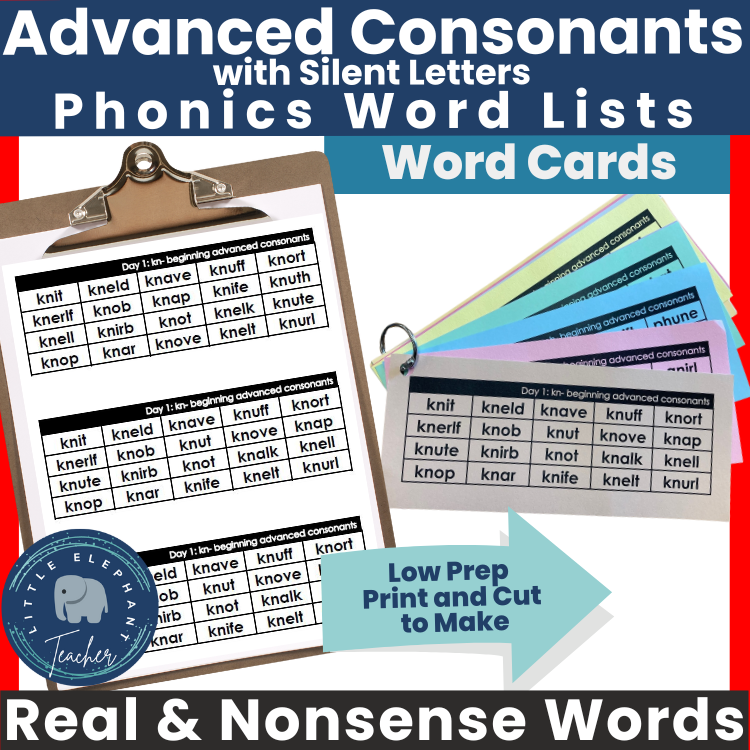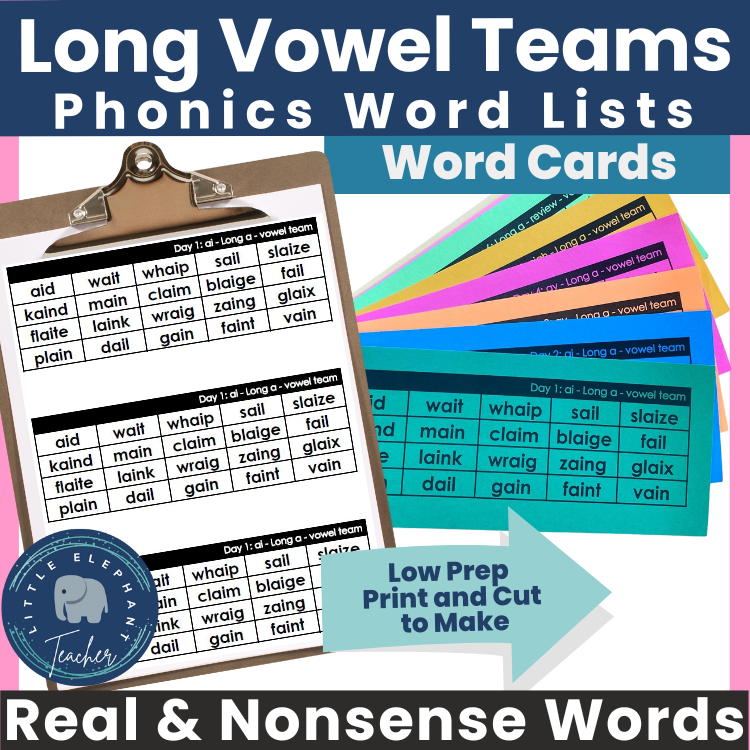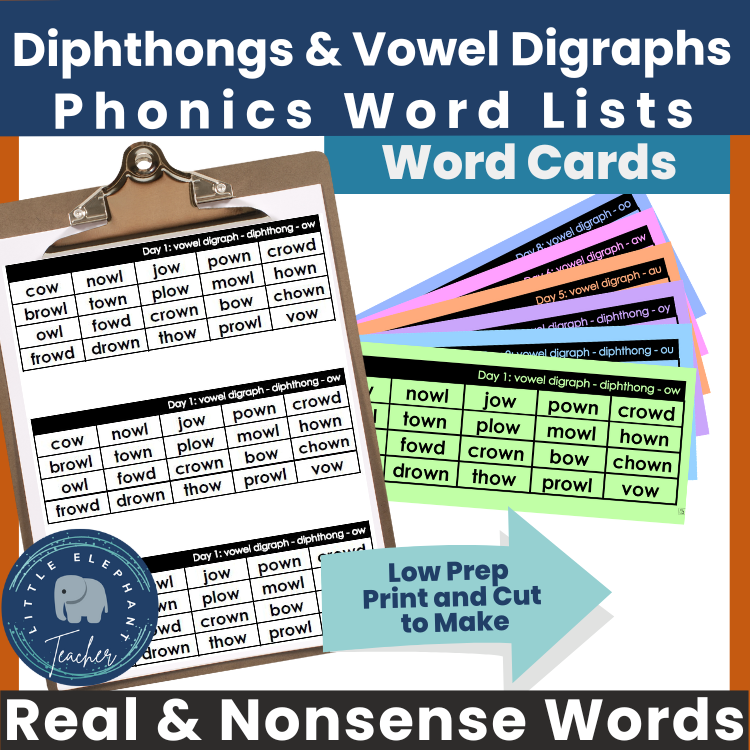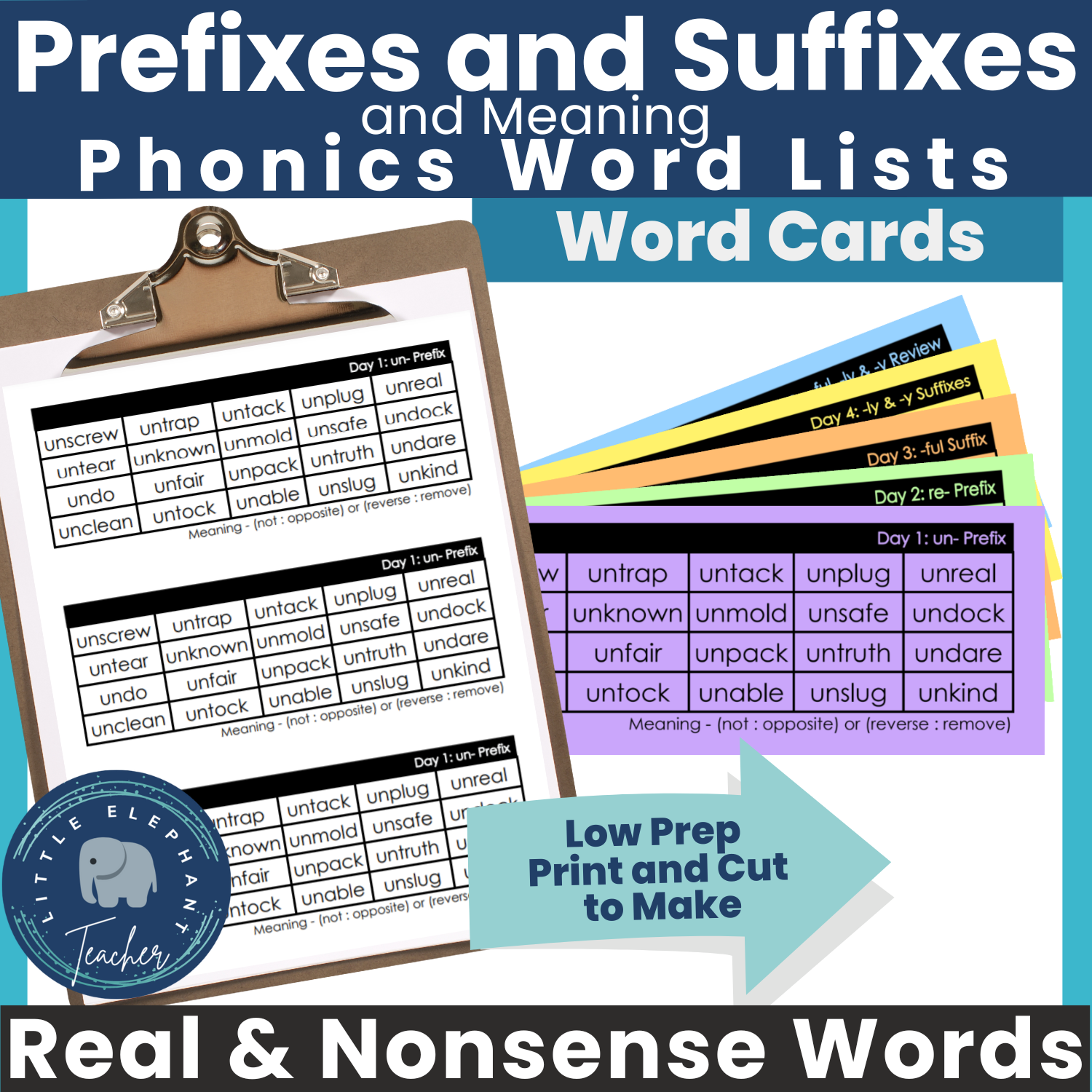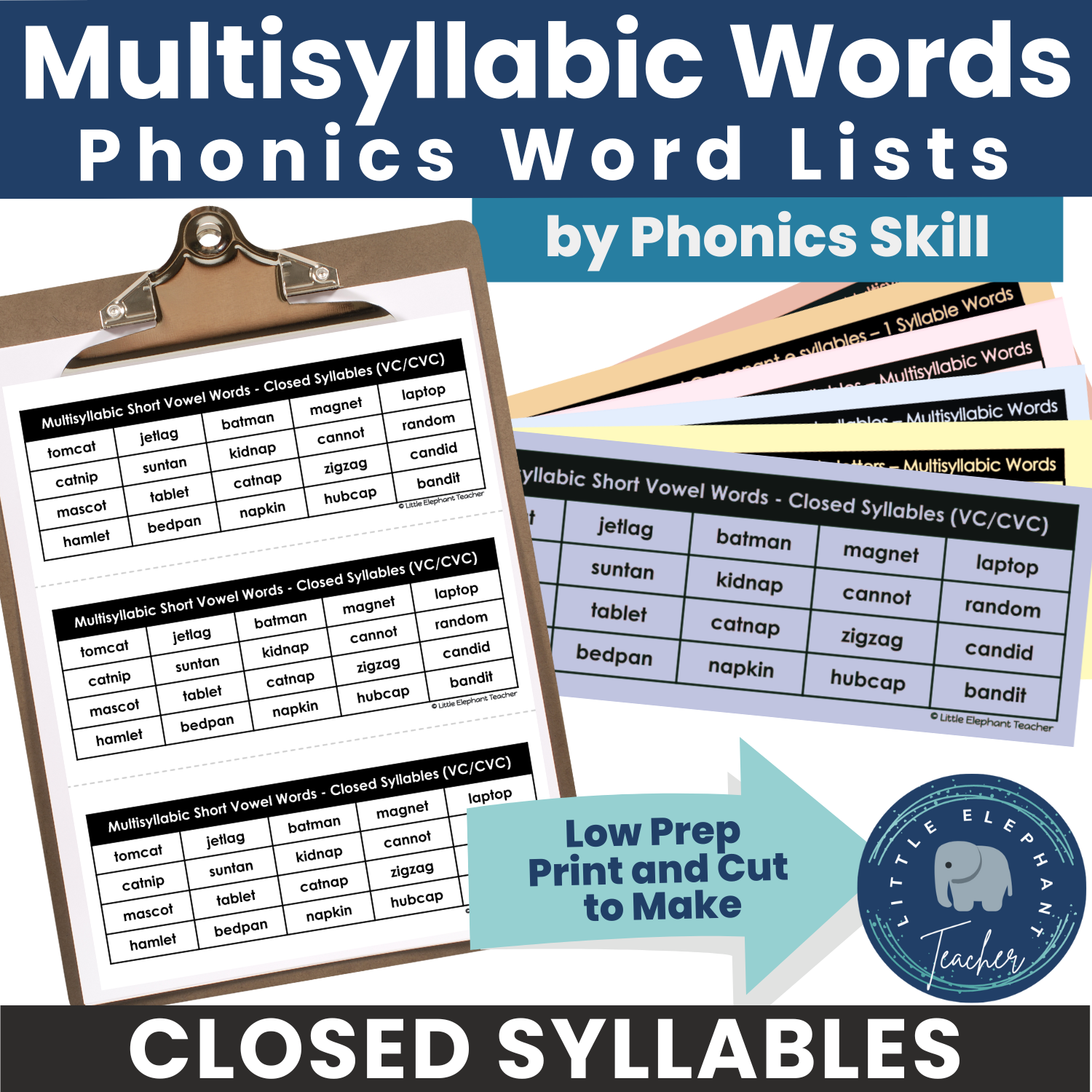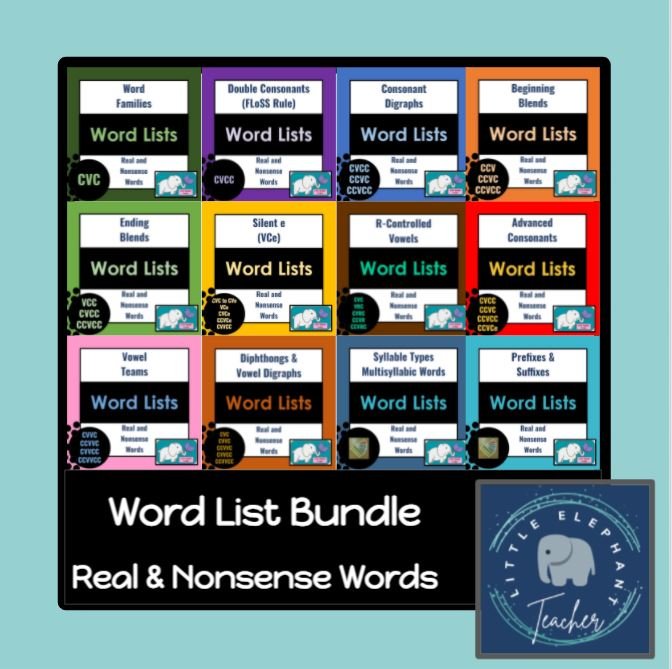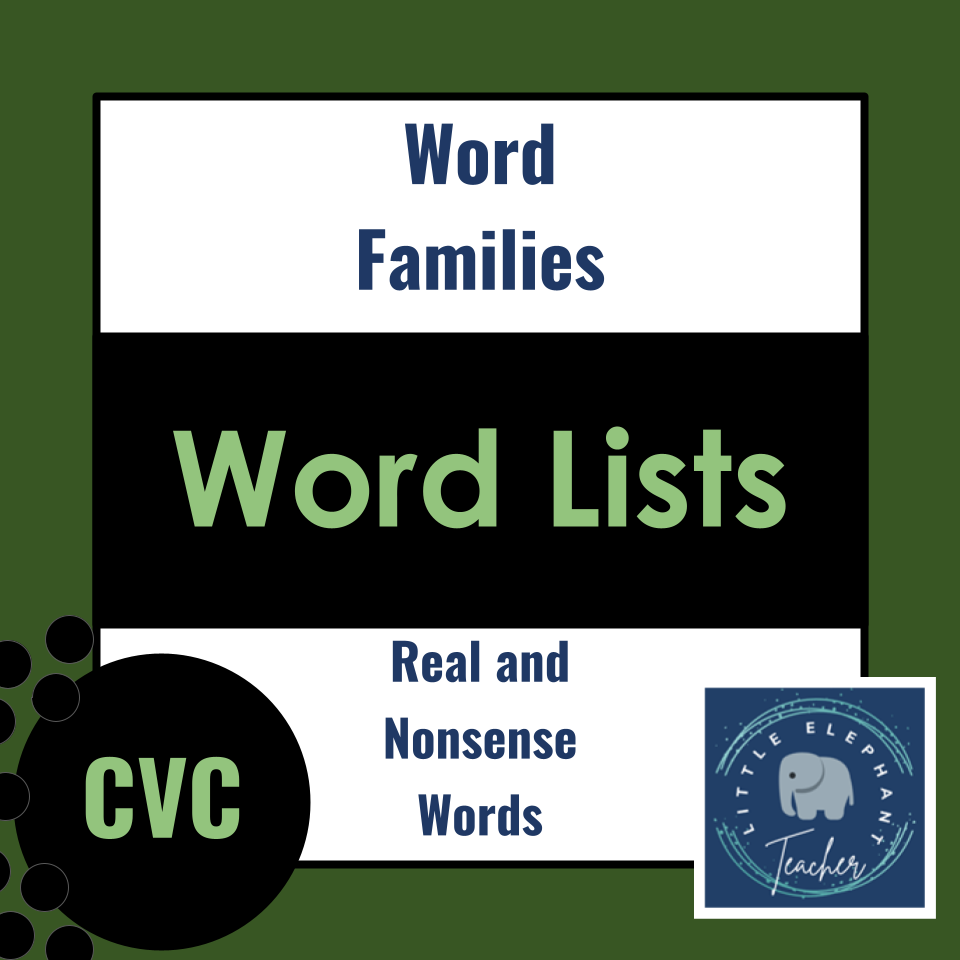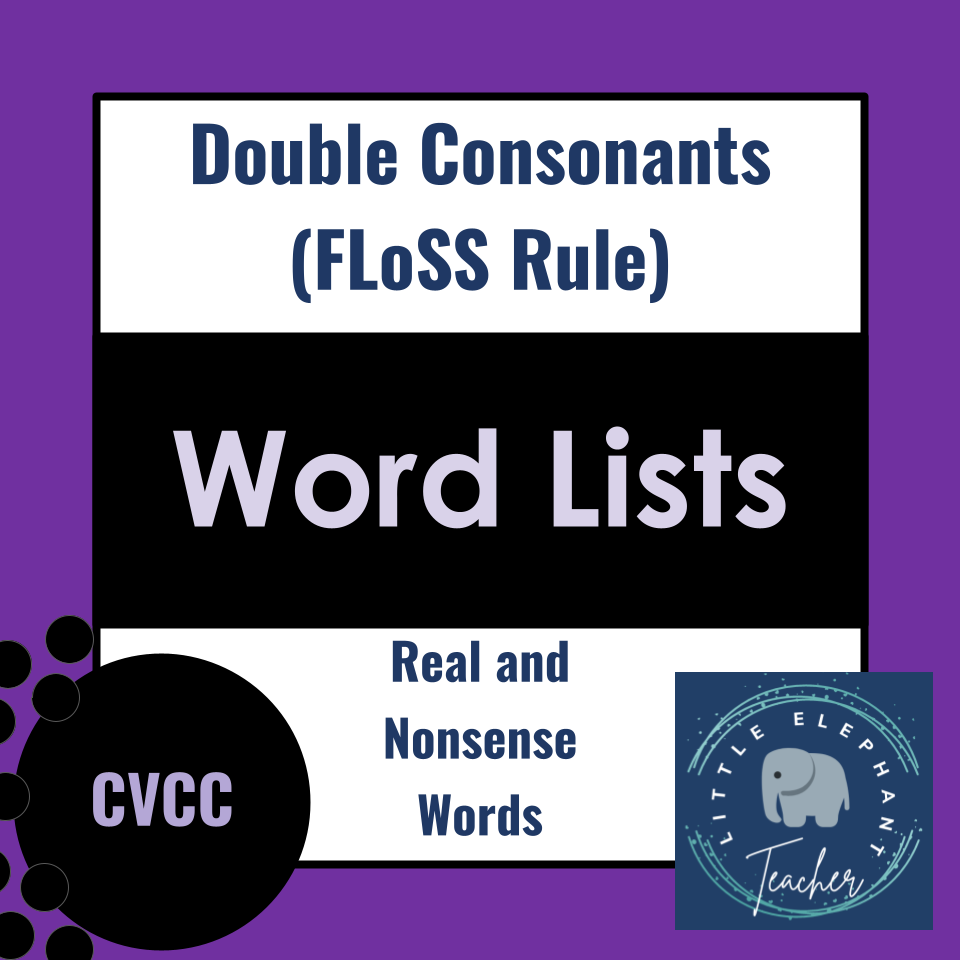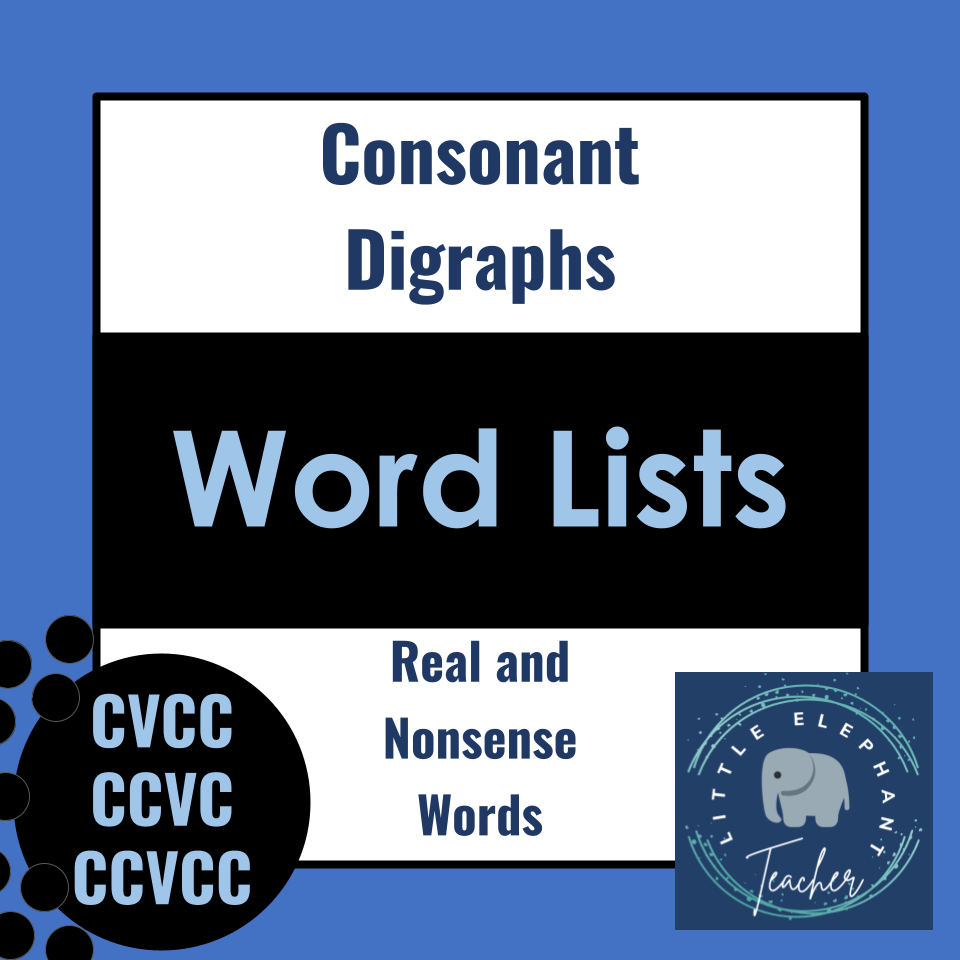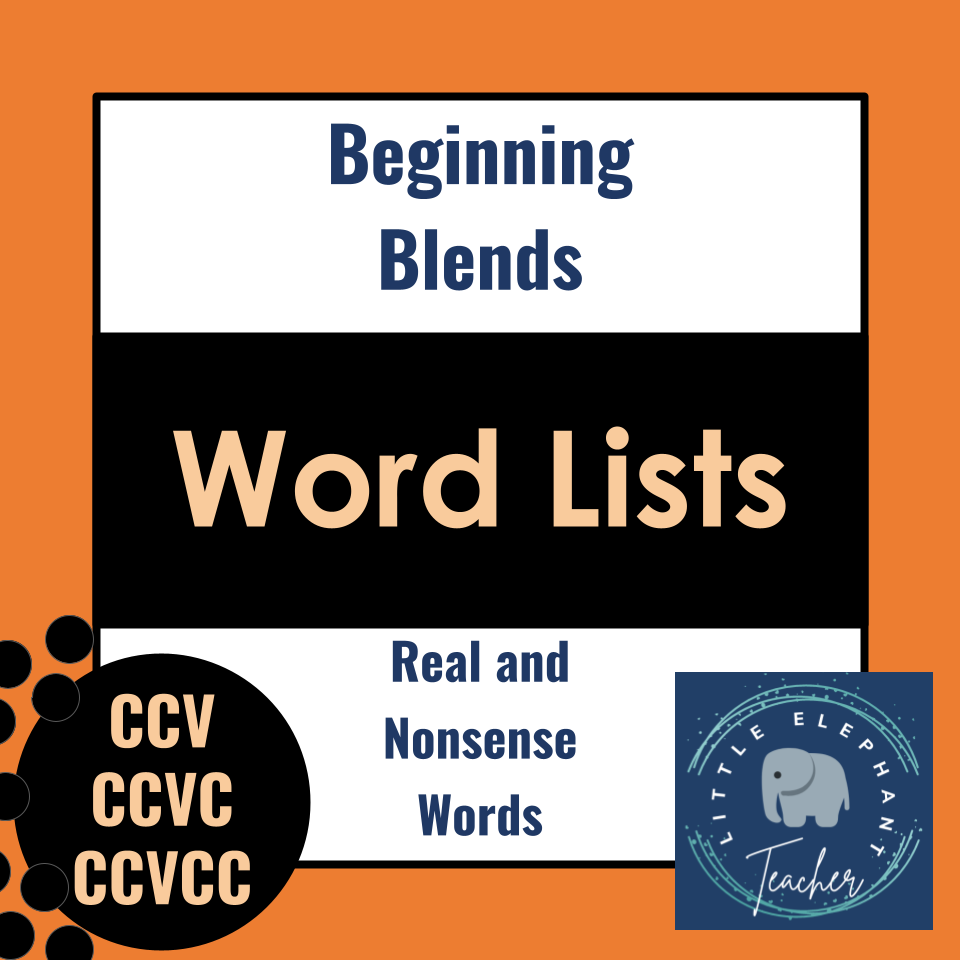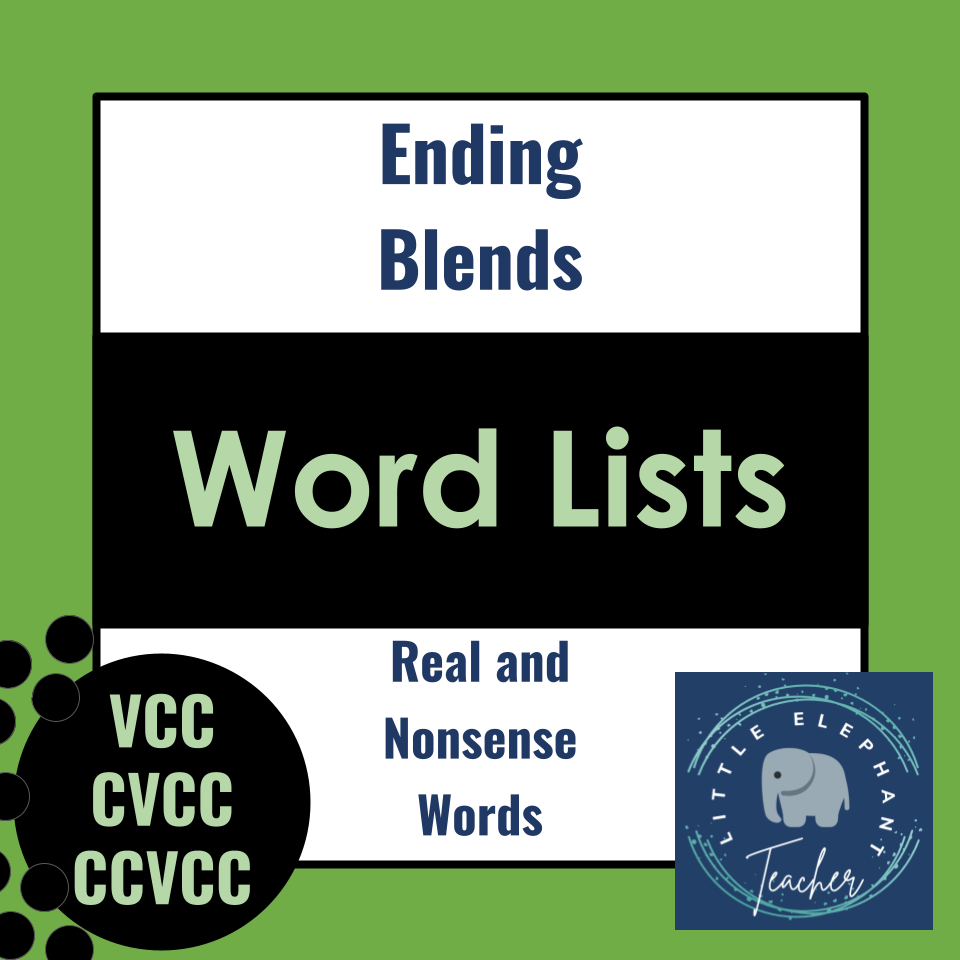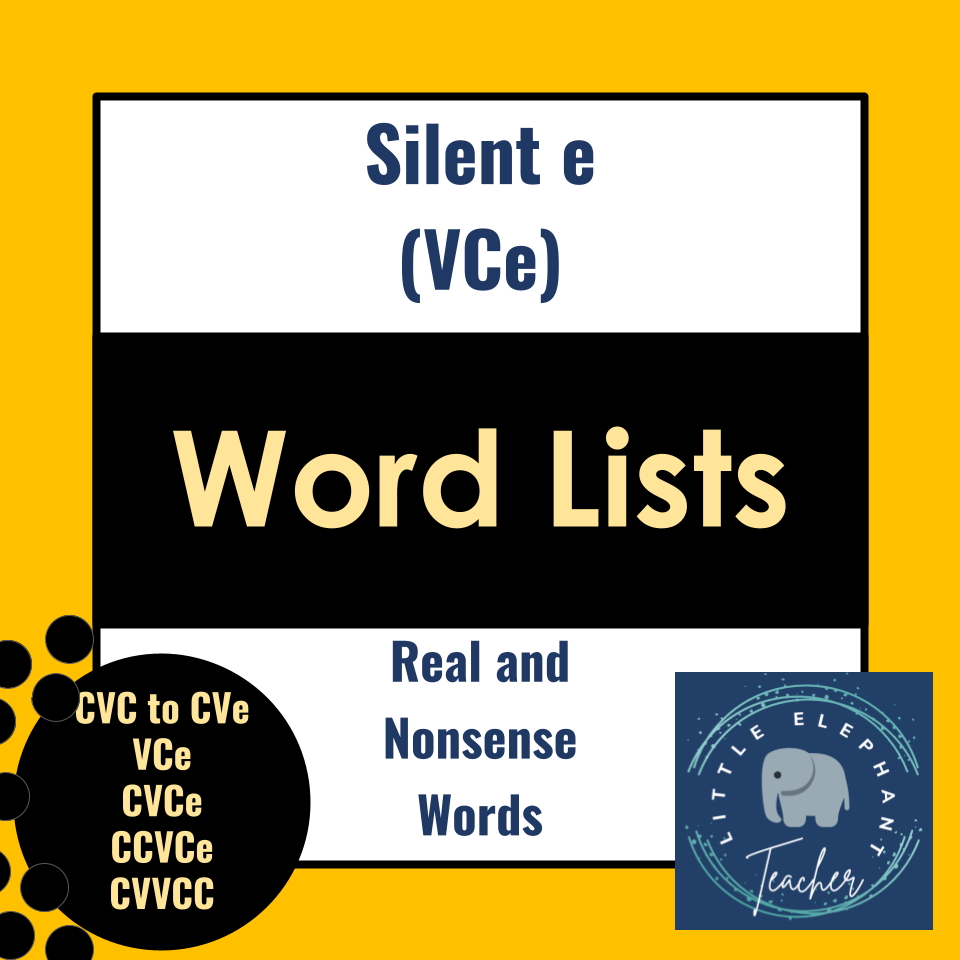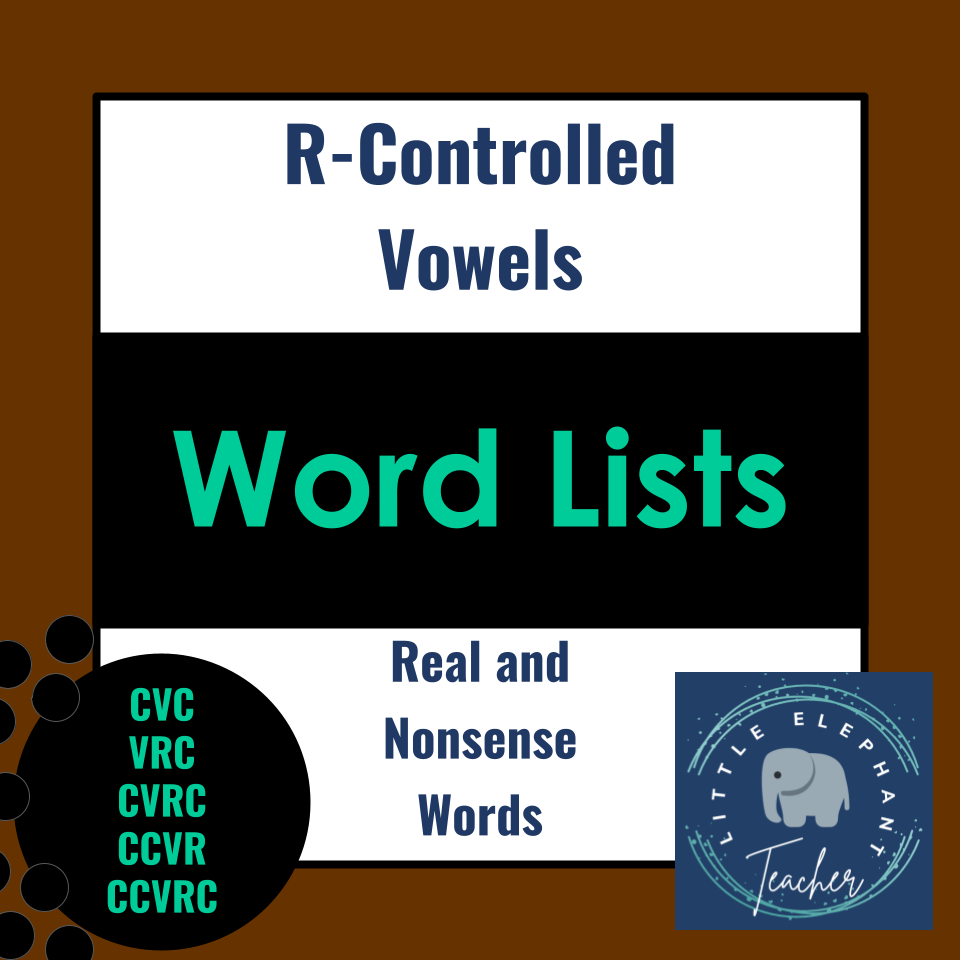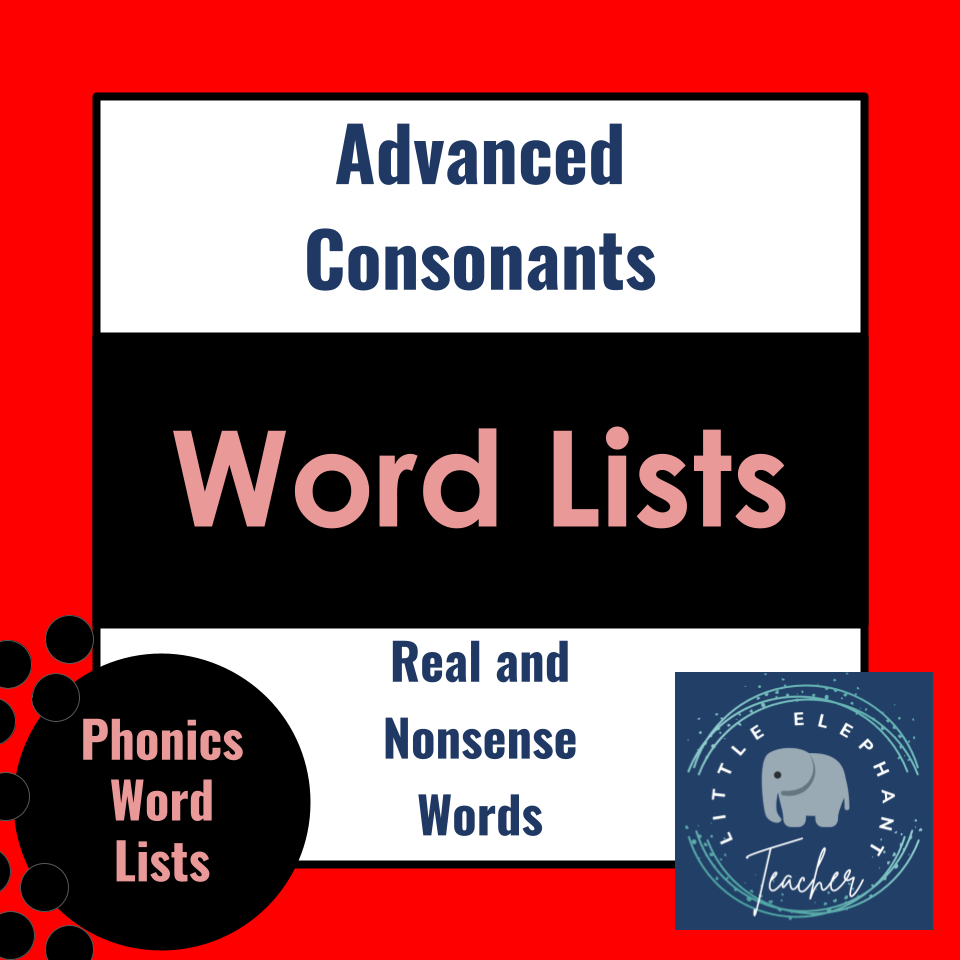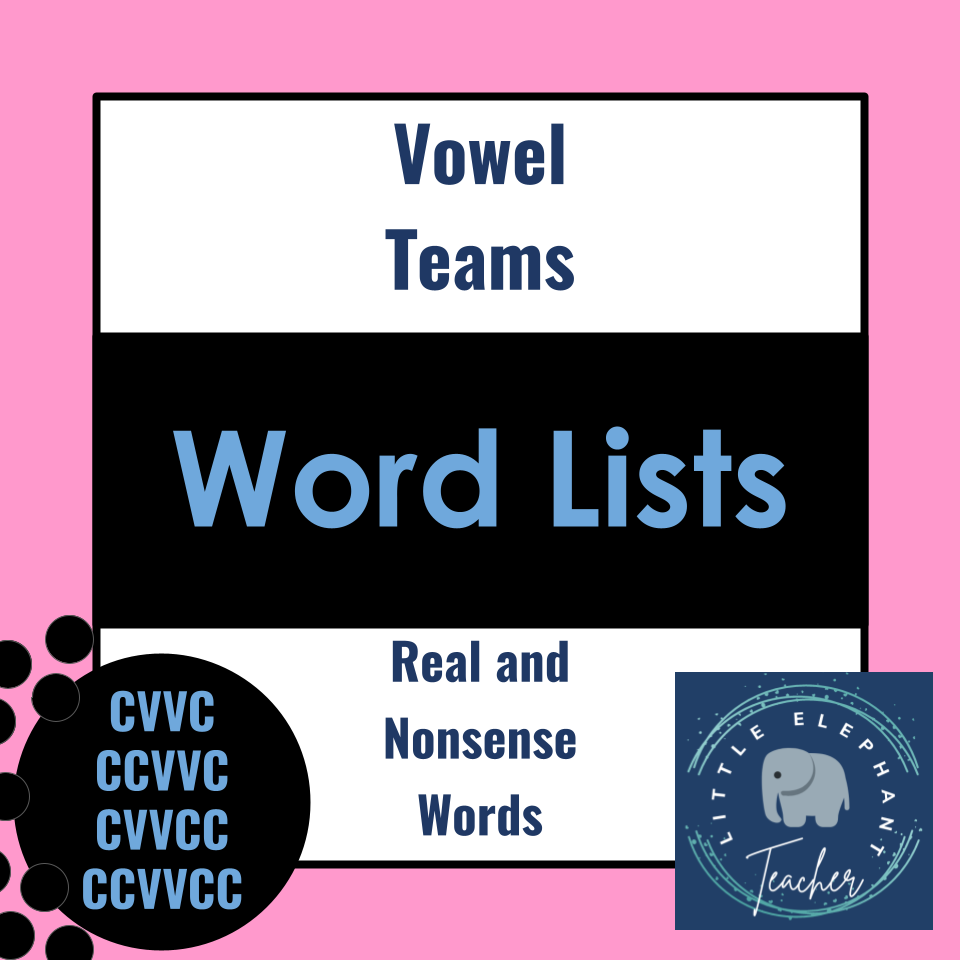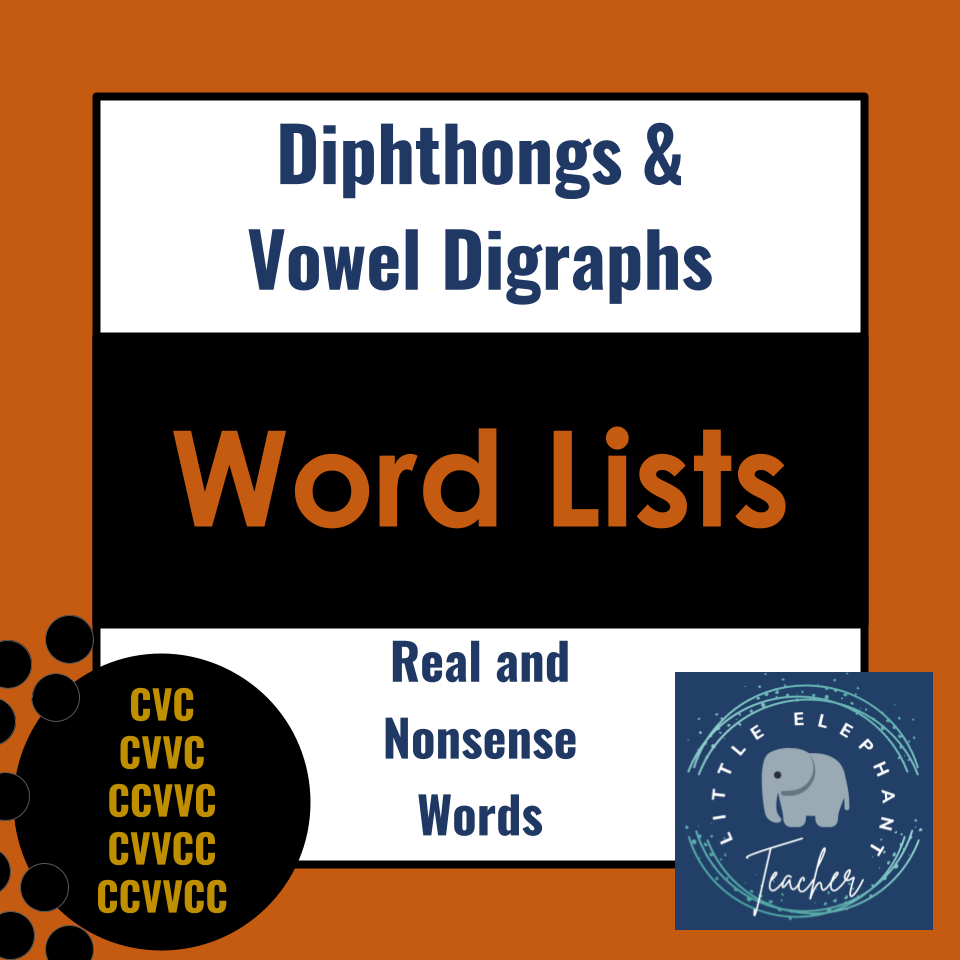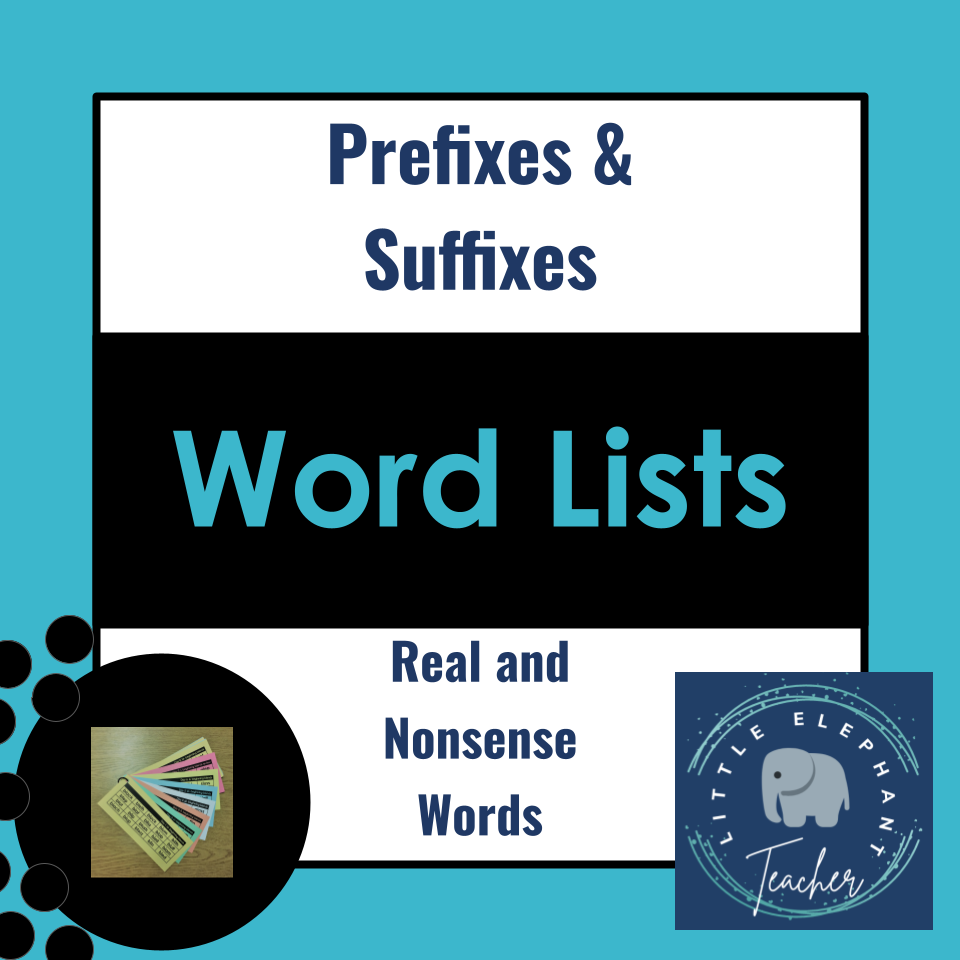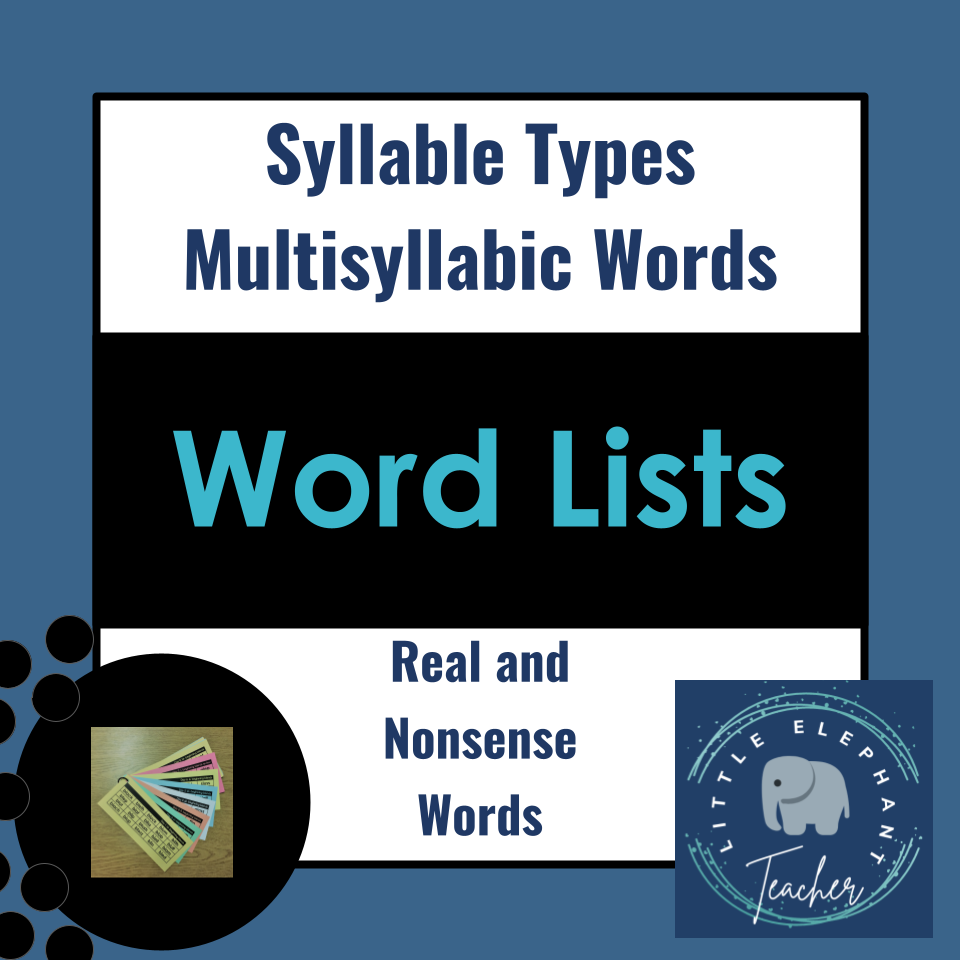7 Fun Activities for Decoding of Words Using Phonics Based Word Lists
Have you exhausted all of your ideas for practicing decoding of words during a phonics lesson? Are your students bored in your small groups? These decoding word lists and strategies will change that!
Tammy said, “My students loved this resource!” and Jaimee said, “Very helpful and saved me lots of time trying to come up with my own word lists!”
Save time and keep your students having fun while learning their phonics skills with these easy-to-prep phonics-based word lists with decoding activities with real and nonsense words. These word lists will help your students build a strong foundation in reading when they use these decoding of words strategies. Read on for more information!
What is Decoding and Why do We Need to Teach it?
To start reading, students must be able to interpret the printed symbols on the page and connect them to words in their spoken language. Meaning relates directly and significantly to the decoding of words.
Decoding of words is the ability to break a written word down by its individual letter-sound relationship to rapidly and correctly pronounce words. Understanding letters (graphemes) and sounds (phonemes) and their connection, will help your students be able to recognize familiar words quickly and figure out words they haven't seen before. When you comprehend decoding skills you are building a strong foundation for reading. Using phonics-based word lists in your decoding of words lessons will help guide your reading word recognition lesson plans. These targeted lists of words have allowed my students to build their sight word vocabulary and increase their fluency benchmark score on our state reading assessment.
Being able to match graphemes to their phonemes has been proven to be most effective with phonics instruction. When you teach students decoding skills, you must have an explicit and systematic plan. Modeling, guided, and independent practice, while instructing phonics in a logical order, helps students master decoding skills quickly. This is key when you are wanting students to fluently read whole words correctly and automatically. Starting with the simplest sound/letter concepts and building to more complex skills is the phonics teaching method I use.
Where Do I Start When I Teach Decoding Words?
When you want your students to decode any text, you must assess which phonics skills your students need before you plan your decoding intervention.
Each Fall I give every student in each of my groups the Quick Phonics Screener (QPS). The QPS is a diagnostic tool that helps determine which key phonics skills a student knows well or still needs to learn. It begins with letter names and sounds and progresses through to multisyllabic words. This assessment helps me pinpoint possible gaps in learning so I can design a targeted phonics intervention. It can also be used to assess a student's growth during or after phonics instruction.
Example: I have a 1st-grade student who needs a phonics intervention group. Before the group starts, I will pull this student independently. Since she is in first grade, I will start in the letter name section of the Quick Phonics Screener. If the student reads all of their letter names and sounds correctly and automatically, we would move to the VC/CVC nonsense words section. If they score 80% or above we would move on to the CCVC/CVCC section. If they score below 80% that is where my instruction will start!
This is the link to the FREE Quick Phonics Screener! You can find the procedures for administration, scoring form, and student copy here.
Phonics Progression
My district follows the Quick Phonics Screener (QPS) when instructing phonics. My scope and sequence is systematic, and the process is methodical in procedure and plan. The phonics progression is continuous and connected, starting with letter names and sounds and going through to multisyllabic words.
See the phonics progression by grade level below!
How do you decode words? Decoding of Words Using Phonics Word Lists
We need to use phonics word lists with real & nonsense words in our phonics-based guided reading lessons to teach decoding and blending strategies. I use phonics-based word lists daily in my structured word recognition lesson plans. These lists target the specific phonics skills being taught. For students to take in, absorb, and digest each letter/sound connection, students must work with 15-20 real and nonsense words per lesson. Here are 7 ways you can use these word lists in your guided reading and phonics instruction. Stop by my store to get these decoding word lists.
Pre Reading Activity
ONE - This pre-reading activity is short and will be used to introduce students to the targeted phonics skill in the word list. It should be a way to get them ready to read the decodable story.
Look for words students might know
Link words to prior knowledge
Identify Targeted Phonics skills in list
Call out words and have students find them
Sound by Sound
TWO - Read one word at a time. Say the beginning, middle, and end sounds. Blend those sounds to read the word.
1st Read - Teacher Models
2nd Read - Students Repeat Teacher
3rd Read - Students Independently Reads
THREE - Read one word at a time. Say the beginning, middle, and end sounds. Blend those sounds together to read the word.
1st Read - Choral Read
2nd Read - Teacher Repeats the Students
3rd Read - Partner Read
Read Whole Word
FOUR - Read one word at a time. Read the whole word, then say the beginning, middle, and end sounds. Blend those sounds to read the whole word again.
1st Read - Teacher Models
2nd Read - Students Repeat Teacher
3rd Read - Students Independently Reads
FIVE - Read one word at a time. Read the whole word, then say the beginning, middle, and end sounds. Blend those sounds to read the whole word again.
1st Read - Choral Read
2nd Read - Teacher Repeats the Students
3rd Read - Partner Read
Timed Fluency Readings
SIX - Improve reading speed and accuracy with timed readings using the phonics word lists. Students orally read the targeted words for one minute. They will flag which word they left off on. Repeat this three times. Reading these lists of words several times with expression and smoothness will help increase your student's reading rate.
Quick Checks
SEVEN - After we read the word lists, I will pick one student to read to me. The other students will independently whisper and read quietly. I will do a running record and write down which words they get stuck on. I will then use this data to extend my instruction in decoding these phonics words. From my observations, I will use the words my students need to work on and orthographically map out those specific words. This is my encoding section of the guided reading word recognition lesson plans.
Here is another great post on How to Teach the Decoding of Words to Increase Your Child’s Reading Skills by Emma at My Kid Equip. Read this article to find more information on How to Teach Decoding Words and more strategies!
Phonics Word Lists are Easy to Prepare
Each page contains 3 of the same daily word lists. This way you can cut the paper into 1/3. I printed mine on cardstock and bound them together with a chicken ring. For bigger groups, I printed each day on different colors of cardstock, so I could easily check to see if all students were on the correct day.
Where to get Targeted Phonics Word Lists
I have personally used these phonics-based word lists in my small reading groups. My students were able to apply their decoding skills to develop fluency in reading isolated words. These word lists are an excellent phonics resource, which can be used to individualize your intervention reading groups. They are a great resource for students or parents to reference for additional reading support. You can find these Phonics Based Word Lists at my Teachers Pay Teachers Store
Or you can find these phonics skills at the link below!
I absolutely enjoyed sharing my ideas for how I am using these phonics-based word lists during my phonics-based guided reading lessons plans! I’d love for you to send me an email, or DM me on Facebook and Instagram with what you need more help on. I’m here to help you with any phonics and reading lesson planning questions you may have! I hope that after reading this article, you will make phonics word lists a staple in your decoding of words intervention.
If you have any questions, please feel free to email me at Littlelephanteacher@gmail.com
I appreciate YOU!!
Ready to take your teaching to the next level? Head over to our Little Elephant Teacher TPT Store today and grab must-have resources. Happy teaching!
Be the first to know about my new discounts, freebies and product launches:
CLICK HERE to receive updates on new products, sales, and freebies! I discount ALL new products up to 50% off for the first 24 hours. It really does pay to follow me!
⭐️ Customer Tip:
Don’t forget that leaving feedback earns you points towards FREE TPT purchases.
I truly do value your feedback!
⭐️ What are TpT Credits?
You can gain TpT credits by going back and leaving feedback on any purchases that you have made. The credits build up and then you can use them towards future purchases! The credits REALLY do add up!
